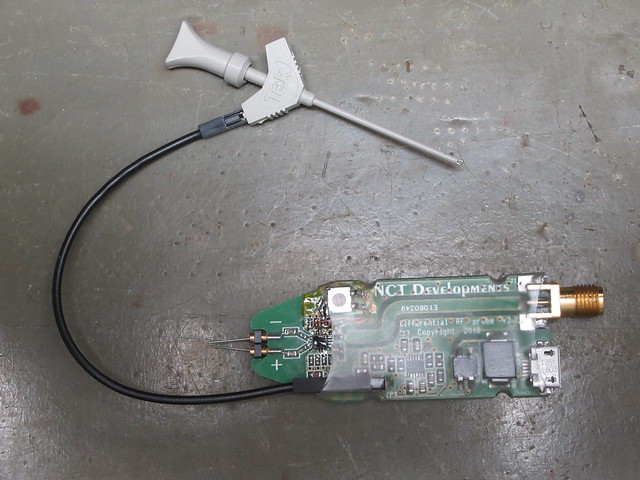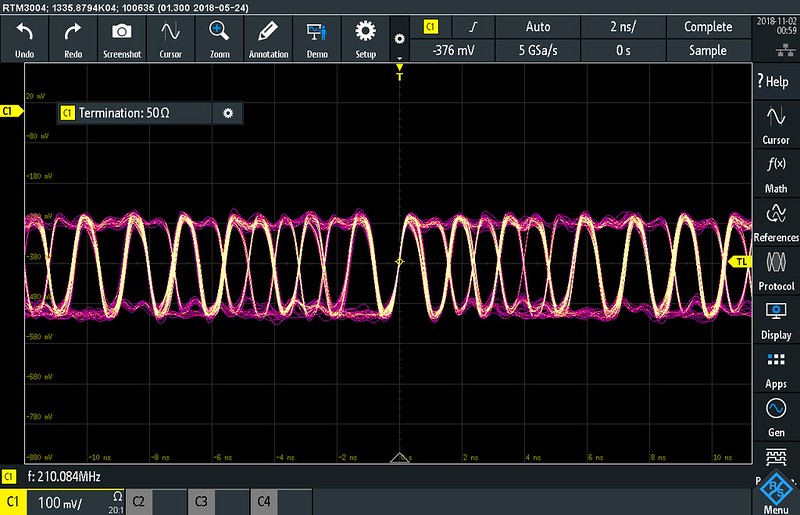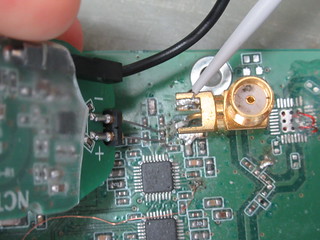Time for an update on my design using an LMH3401. The differential impedance is 2k Ohm and the capacitance is less than 0.5pf (I can't measure any lower). The maximum differential input voltage is +/-20V RMS (based on dissipation). The maximum common-mode voltage is +/-13V. These ranges are wide enough to measure low-side current sense resistors and the gates of MOSFETs in the low side of a switching power supply as well.
First some graphs from the spectrum analyser up to 3GHz.
Normal and reverse connected bandwidth to show where the common mode amplification starts to deteriorate:

Common mode rejection:

It looks reasonably flat up to 2.2GHz and the CMMR is -40dB at the worst point. All measurements where made using a levelled RF generator set to 0dBm and 50cm of Huber+Suhner coax (and a DC blocker) connected between the probe and the spectrum analyser.
On to the practical part. On the differential probes I've seen there are moveably probe tips so points with a variety of distances can be probeb. I wanted to achieve something similar. After some thinking I came up with the idea of using thin stainless spring steel rods inserted into sockets. The end result is this:

I didn't expect the offset voltage to be as bad as it is (in the prototype it is 30mV) so I had to bodge a potmeter onto it. The ground lead is to equalise the ground of the probe with the ground of the DUT. The power is supplied using a micro-USB connector. A switching capacitor chip with linear post-regulators provides a positive and negative suply voltage.
Let's measure some signals. First a 1.25Gbit ethernet stream:


Secondly a 250MHz square wave:

The stainless steel spring rods seem to work fine. Probing a 0402 component is doable as well:

All in all I'm quite impressed. It took 3 board spins to come up with something decent. The results from the initial version with the ADA4927 made me sceptical about using a fully differential amplifier but I'm happy dietert1 held a strong argument in favour of using the LM3401.
I still need to add the potmeter to the final PCB design. Perhaps I'll add a slit between the input divider resistors to reduce the input capacitance as far as possible. If there is some interest I could have a small batch made. For now I have used heat-shrink tubing as a casing but I have created some indents in the board so it can be held in place in a 3D printed housing.